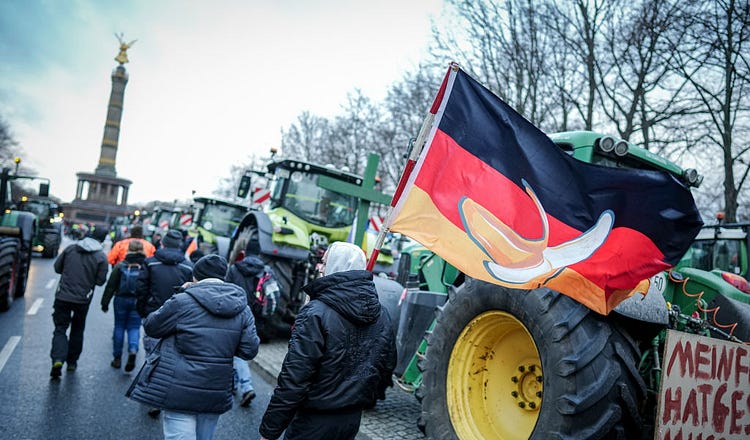Road Warriors: The New Proletariat

Demonstrators and their tractors in Berlin in January. (Photo by Kay Nietfeld/picture alliance via Getty Images)
Why the truck and tractor are replacing the picket line—and what that says about our politics.
73
From Europe to America, mass protest movements increasingly take place on wheels. The streets of Berlin have been choked in the past couple of weeks by the tractors of farmers protesting government cuts in diesel fuel subsidies for vehicles and farm machinery, with similar protests taking place in France, Poland, and Romania.
Beginning in 2018, the stree…
Continue Reading The Free Press
To support our journalism, and unlock all of our investigative stories and provocative commentary about the world as it actually is, subscribe below.
$8.33/month
Billed as $100 yearly
$10/month
Billed as $10 monthly
Already have an account?
Sign In


